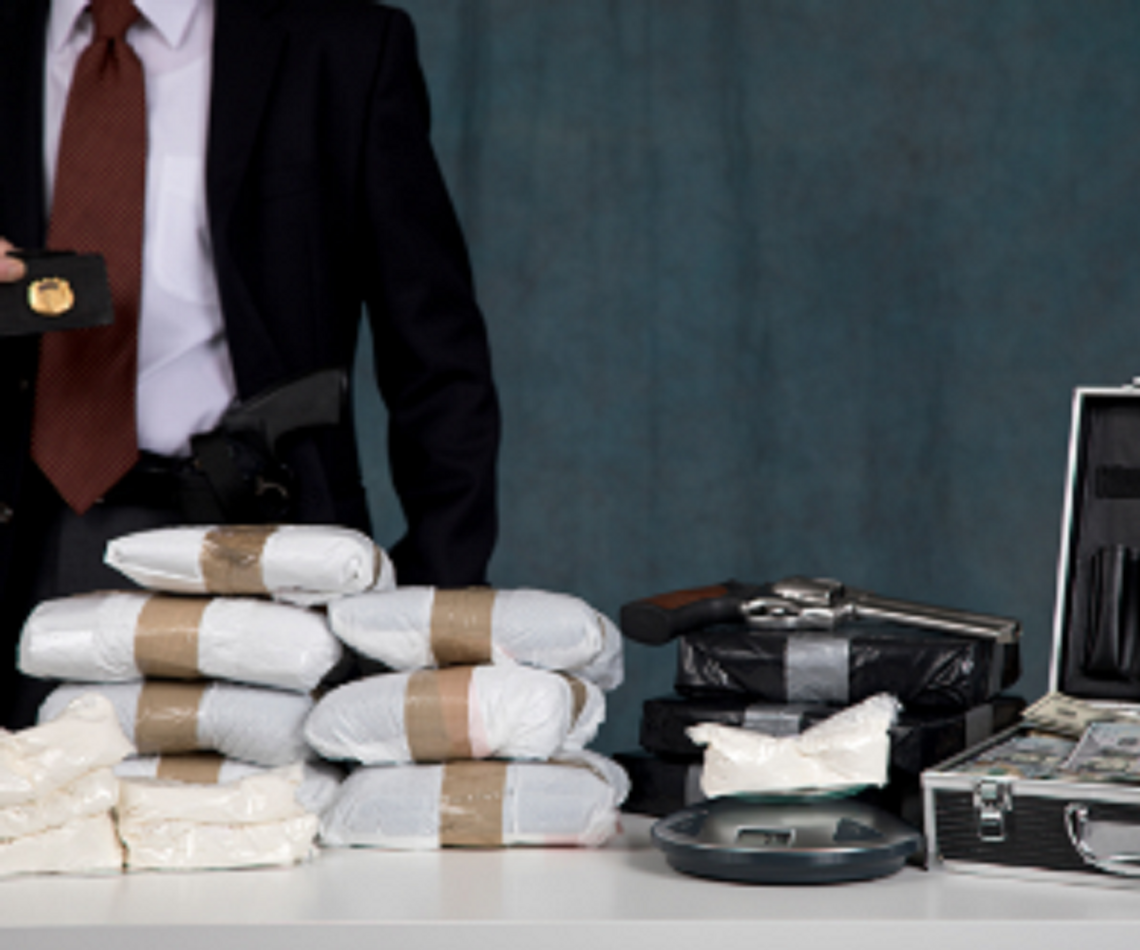The North Central Narcotic Task Force met recently regarding operations within Churchill County. The Task Force, a grant-funded joint law-enforcement operation, includes officers on loan from the Fallon Police Department, deputies from the Churchill County Sheriff’s Office, and investigators from the Department of Public Service. The primary focus of the Task Force is narcotics enforcement and protecting local citizens against drug-related crime.
According to the program supervisor and former DEA agent, who cannot be named, drug activity lulled slightly during the onset of the COVID pandemic but spiked later in the year. “It didn’t slow them down much,” stated the Task Force supervisor, “although, we did see a spike in the amount of available product after the restrictions were lifted.” The growth continues and appears to be three-fold; more substantial quantities of narcotics are moving into the community, more types of drugs are in play, and more people are now involved in the drug scene.
Since the 1980s, Fallon’s number one drug of choice remains methamphetamines. However, meth manufacturing in the area remains nominal. Since the 2006 Food & Drug Administration restriction on bulk sales of ephedrine, the primary ingredient in meth, it has become costly and more difficult to obtain. As such, small-scale production has become too expensive and risky for most. Some “one-pot” operations still exist, in which a small batch of the drug is cooked primarily for personal use.
In addition to the ongoing battle against methamphetamines, the Task Force reports more prescription drugs are on the street. These are usually sold for cash by individuals with valid prescriptions either don’t need the extra medication or need the money the pills can bring. These typically include narcotic pain medications and anxiety benzodiazepines like Xanax and Valium. Despite the crackdown on doctors overprescribing, these drugs are still readily available on the street.
Also problematic is the arrival of Fentanyl into the county. Fentanyl is a concentrated opioid-based medication used for pain and anesthesia. Small amounts of Fentanyl have hit Fallon’s streets, most often in the form of a patch. The narcotic offers a rapid release with effects that usually last under two hours. It can also be used as an injectable liquid, nasal spray, a pill, or absorbed through the cheek through a lozenge or tablet. In some areas, the drug is mixed with heroin or cocaine and can have devastating effects. Fortunately, according to the Task Force, it is too expensive of a narcotic for most local users. Many of those who cannot afford the costly Fentanyl high turn to black-market heroin – a much cheaper option that can be administered in various ways, including smoking, injecting (mainlining) or snorting.
Over the last year, there has been an uptick in younger users/dealers interacting with Task Force officers. As students begin to return to campus and restrictions lessen, more drug activity is taking place. In addition to marijuana use, younger people are using meth, cocaine, and prescription medications. One dangerous example is Pharming (a reference to pharming parties), which involves tossing random pills into a bowl for ingesting. These drugs are usually obtained through parents’ and grandparents’ medicine cabinets and could include anything from oxycontin to Grandma’s blood pressure pills. The goal is intoxication, but this Russian Roulette-style party game has far more significant risks than party-goers realize and can have devastating results – including death.
A costly consequence of drug use is that it often leads to crime. “More selling equals more using,” said the Task Force supervisor. “With it comes more ancillary crimes.” The majority of property and theft crimes are connected in some way to illicit narcotics. Users are trying to find money to buy drugs, even if that means stealing. Violent crimes are often also a result of drug use. Domestic violence crimes, which appear to be increasing in number, are also usually connected to drugs or alcohol. The drug-crime connection is not always obvious. Many people are unaware that most felony offenses committed in the U.S. are related to drugs in some way (using, buying, selling, trafficking, manufacturing) even if drugs were not involved in the crime’s actual commission.
Also, the Task Force has assisted other jurisdictions in apprehending both drugs and drug dealers. Last year, during a stolen property case, the Task Force assisted Dayton law enforcement in seizing a pound of methamphetamines and several firearms from Jessie Gilbert, who has several connections in Churchill County. According to the Task Force, that was a small amount for the suspect to have on hand. He is currently awaiting sentencing. In another case, they assisted in the apprehension of an escaped jail inmate in Mineral County. They also took part in arresting Lucas Brady, an ex-felon in possession of a firearm with an “obliterated” serial number on the weapon that he was illegally possessing.
There appears to be nominal meth manufacturing within the county. Approximately 99% of drugs coming into the Lahontan Valley are trafficked from Reno (primarily) and Las Vegas. Fortunately, Reno is not considered a hub for illegal narcotics like Las Vegas.
Over the last year, the Task Force has made 119 arrests, with 95 of those narcotics-related. They seized $2,200 in cash, three firearms (handguns and rifles), seven other weapons like tasers/ electronic stun gun devices, and brass knuckles. They also recovered three stolen vehicles and seized $800,000 (street value) worth of controlled substances. With the ability to work from every direction and utilize federal partners for investigations, the Task Force is bearing down on both the higher-level dealers and average users by virtue of their presence.
“We are surprised we are seeing more gun activity – and it is making its way out here,” said the Task Force supervisor, “Because we have made such an impact on the drug community, no one trusts anyone else. That means more guns.”
The Task Force is continuing work in the community and remains Fallon’s number one weapon against drug crimes - of any size. “We are out here,” states the Task Force Supervisor. “And we appreciate the community buy-in the need for narcotics enforcement.”
Fallon officials, including New River Township Justice Court Judge Benjamin Trotter, who also served as Churchill County Sheriff for eight years, supports the Task Force and efforts to keep drugs off the streets. “I have noted that the members of the current narcotics Task Force are as active as I have ever seen in my 26 years of interacting with the Task Force,” said Judge Trotter. “One of the best changes I am noting is that they are focusing their work in our community. Our neighborhoods and streets will benefit from their efforts.”
There is no doubt that the Task Force is proving itself a veritable force to be dealt with.










Comment
Comments